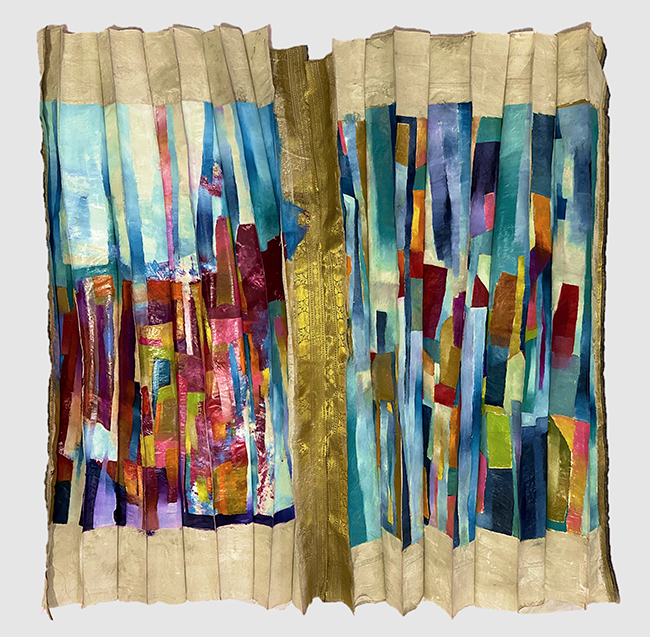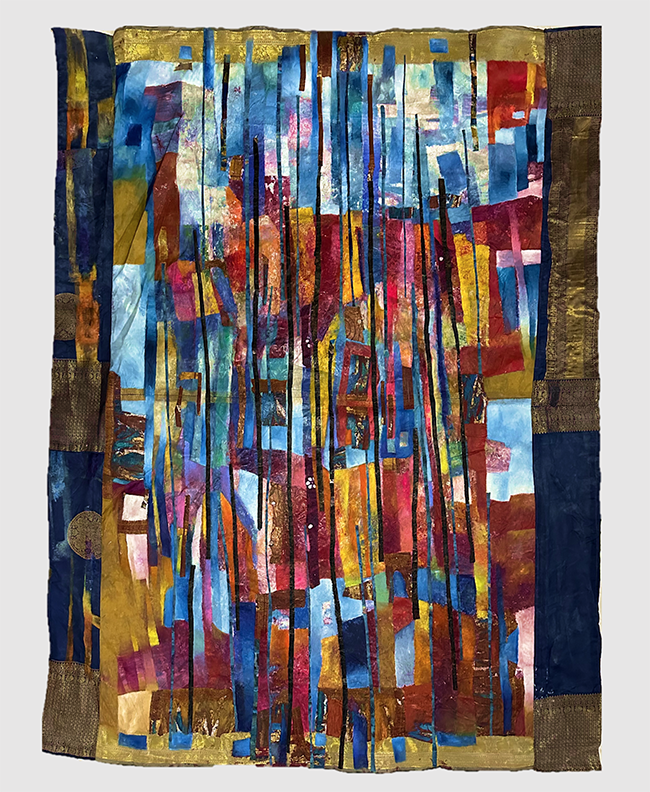Miguel Barros, born in Lisbon in 1962, draws from his experiences living in Portugal, Canada, and Angola to shape a unique artistic voice that transcends traditional boundaries. His career began in architecture and design, having earned a degree from IADE Lisbon in 1984. The influence of this architectural training continues to define his artistic process, combining structural precision with creative fluidity. In 2014, Barros relocated from Angola to Calgary, Alberta, where he continued his artistic evolution while staying rooted in his heritage.

Barros’ work is a fusion of his cultural experiences and design background, blending the technical rigor of architecture with the emotional richness of his personal journey. His paintings reflect a delicate balance between “fantasy and the reality of the world,” as he puts it, drawing inspiration from the different cultural landscapes he’s encountered. This intersection of imagination and reality forms the core of his artistic approach, focusing on themes of identity, memory, and how individuals interact with their surroundings.
One of his projects, the Lusitanian Dream series, showcases his penchant for experimentation with materials. In these works, Barros moves beyond traditional canvases, incorporating oil paints on unconventional surfaces like sarees and paper. He purposely avoids framing his paintings, allowing them to hang freely like tapestries, swaying with air currents. This flowing, unbound nature reflects the themes of movement, freedom, and imperfection, echoing Barros’ desire to break free from the confines of conventional formats. His art challenges the limitations of traditional painting, embracing a sense of liberation from physical and cultural constraints.

A key concept in Barros’ art is “perfect imperfection.” He views the raw, unrefined aspects of his work not as flaws but as expressions of authenticity. This philosophy runs through his entire body of work, where the physical material of the art is as crucial as the imagery itself. Through his paintings, Barros often explores his own memories and origins, maintaining a strong connection to his Portuguese heritage while simultaneously addressing universal themes that transcend cultural borders. His use of bold colors and textured surfaces evokes the landscapes and emotions tied to his past, creating a visceral connection with viewers.
The theme of memory plays a significant role in Barros’ work. Despite being far from his native Portugal for much of his life, Barros remains deeply connected to his Lusitanian identity, which is frequently expressed in his art. His work reflects a sense of nostalgia and belonging, exploring the emotional ties that connect him to his homeland. For Barros, geographical distance does not diminish his sense of identity. Through his art, he dismantles these boundaries, using a universal visual language that resonates with viewers from all backgrounds.

In Colourful Memories in a Mosaic, Barros blends oil paint with gold leaf on canvas to create a richly layered work. The gold leaf adds depth and texture, drawing viewers into its complex surface and inviting them to explore the memories embedded in the painting. Another piece, It Was Late in a Soft Afternoon, uses oil and mixed techniques on a saree, capturing a serene moment. The soft, warm tones of the 130cm x 140cm work create a reflective atmosphere, encouraging the viewer to contemplate time and place.
In After the Storm, Barros returns to the saree as a medium, addressing themes of renewal and resilience. This larger work, measuring 165cm x 216cm, envelops the viewer in sweeping brushstrokes and dynamic textures. The choice of sarees as a material adds another layer of cultural significance, linking these works to a broader narrative while maintaining Barros’ deeply personal touch.
Barros’ art defies traditional artistic and geographic constraints. His paintings express the fluidity of a life shaped by various cultures yet remain anchored in his Portuguese roots. His work is a testament to freedom, continuously evolving while staying connected to his past.
Through his art, Miguel Barros transports viewers to a world where imagination blends seamlessly with reality, where the imperfections of life are embraced and celebrated, and where cultural and emotional borders fade. His paintings offer a space where individuals from different walks of life can connect, engage, and experience the universal power of art to transcend time and place.

